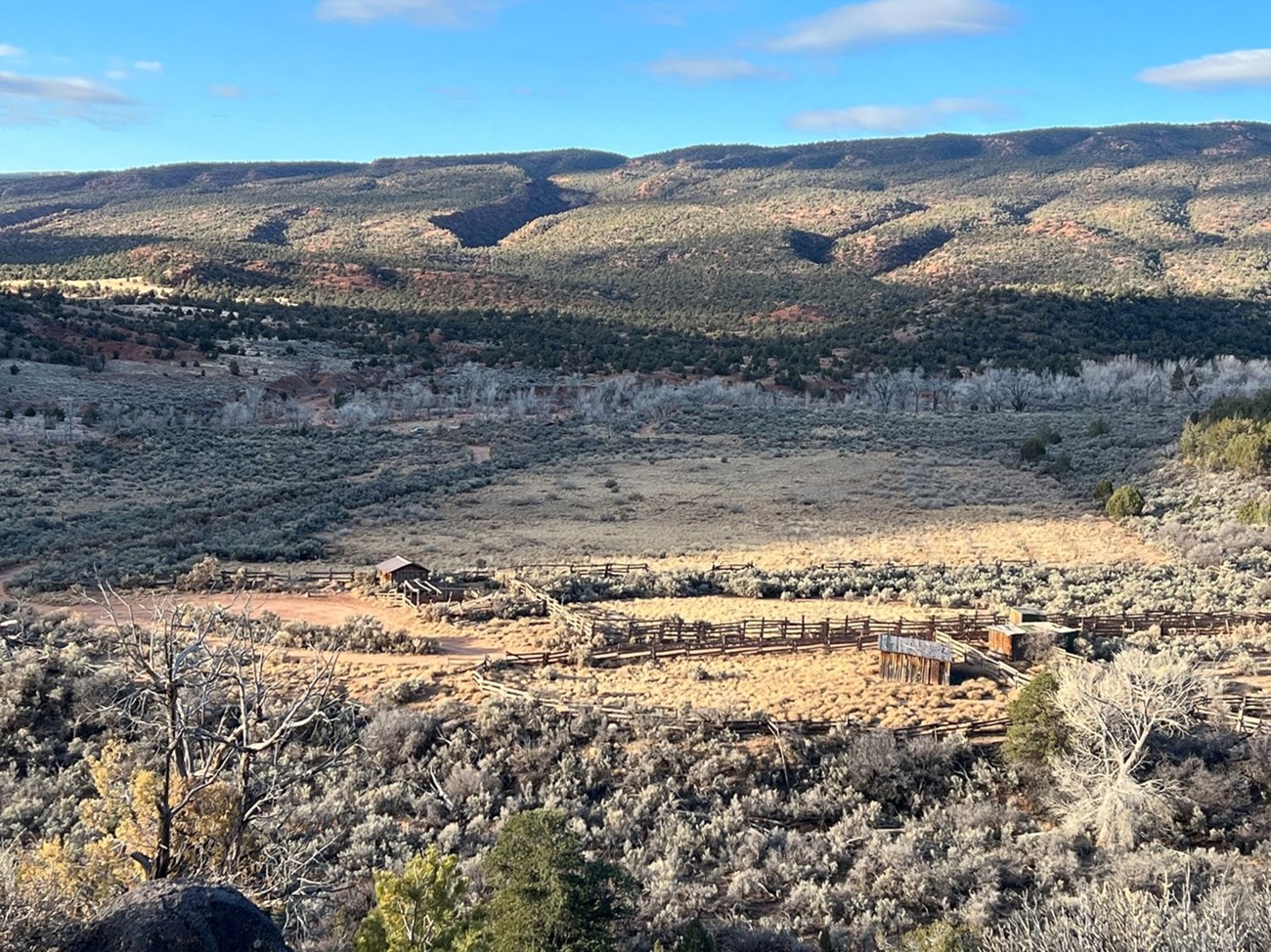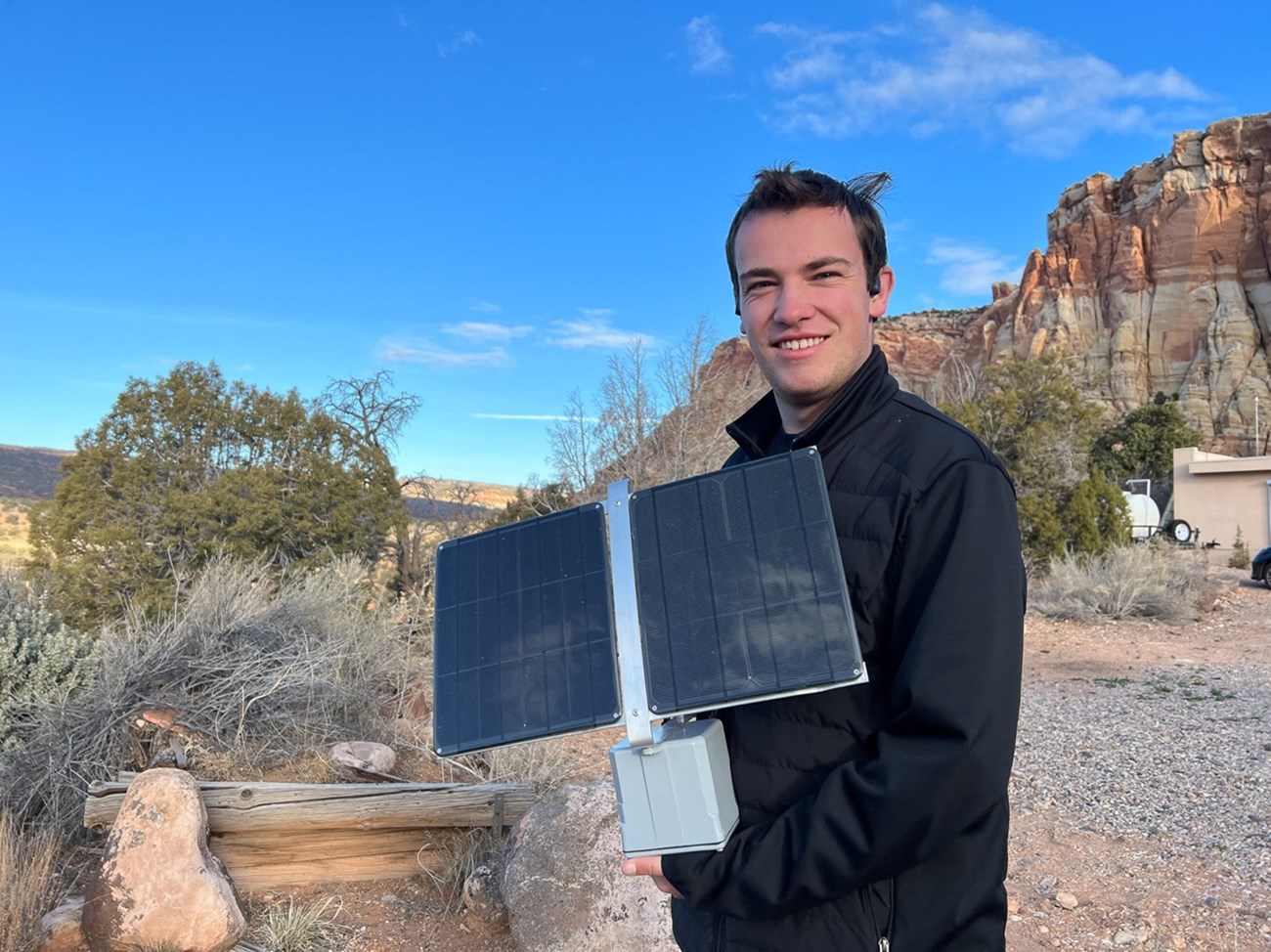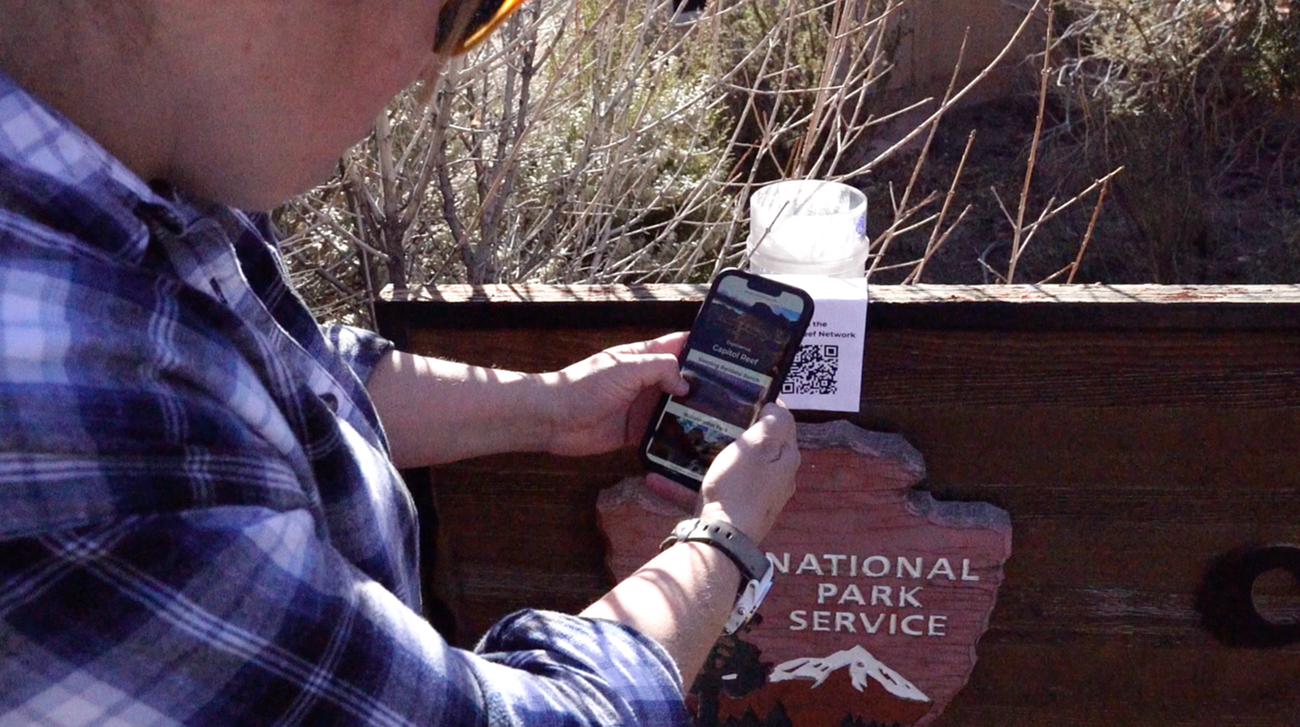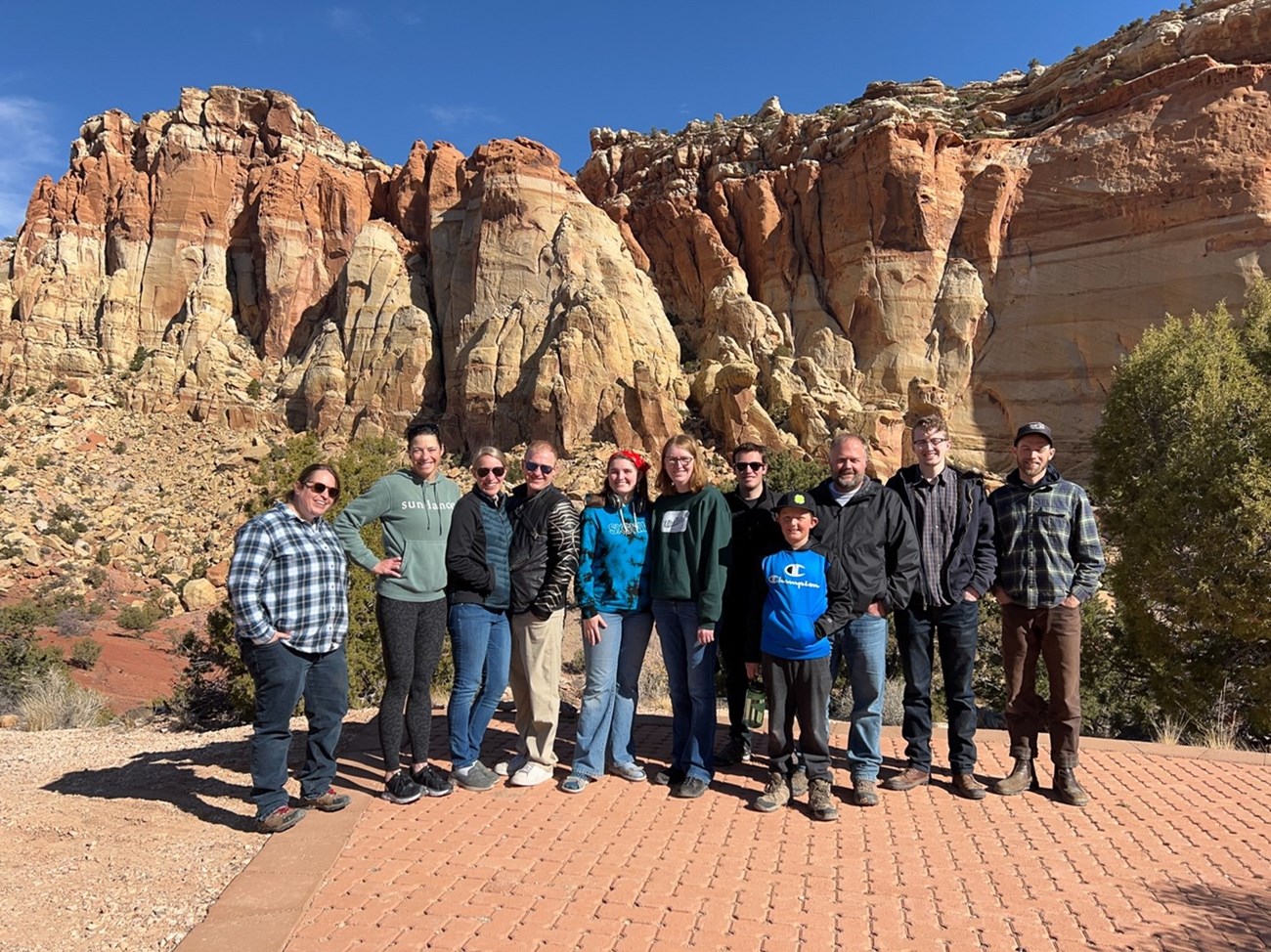Last updated: August 29, 2022
Article
Virtual Field Trip of Sleeping Rainbow Ranch in Capitol Reef National Park
Utah Valley University (UVU) has a unique relationship with Capitol Reef National Park (CARE) and the National Parks Service (NPS). UVU operates an independently functioning field station in the heart of Capitol Reef, on a bluff alongside Pleasant Creek, right above the site of the former Sleeping Rainbow Ranch (SRR). However, during educational trips to the field station, UVU faculty Emily Hedrick of the Digital Media Department and Amber Smith-Johnson from the Department of English and Literature realized there were no posted interpretive displays, signage, or materials to educate park visitors on the remains of the SRR, which includes pioneer-era and early 20th century structures, as well as fencing and other indications of the earlier ranch.

Thus, Emily and Amber set out to collaborate with the NPS, CARE, and the UVU Field Station staff to bring Digital Media and English students to the site, in hopes of capturing both the visual aspects of the ranch as well as the layered history of Pleasant Creek area. Through an NPS grant, the project was approved in the summer of 2020; however, COVID travel restrictions set the project back a year, to June of 2021. In the meantime, Emily’s Digital Media students worked with Amber’s English students to create an interactive pamphlet which showcase images of the ranch taken by UVU students, timelines of the area’s history, and augmented reality (AR) features, which would give SRR site visitors access to additional information. This pamphlet documents the existing features of the area and tells the history of the ranch—information visitors haven’t had access to before.
However, the project didn’t conclude there. As Emily and Amber considered the possibilities of bringing interactive media to the park, augmented reality seemed to be just the beginning. Once they were able to bring students to the park, they also brought vintage Jeeps to the site and affixed them with virtual reality (VR) cameras and were able to capture the experience of riding a Jeep through the off-road access trails Lurt and Alice Knee of Sleeping Rainbow Ranch may have taken their guests on nearly a century earlier. In this way, a guest who had never been to Capitol Reef National Park—or even the American Southwest, for that matter—could experience a piece of the park’s history and topography. They also took walking VR footage of the Sleeping Rainbow Ranch site, creating an immersive experience that would allow visitors to virtually walk the paths around the site, enter the buildings, and view artifacts in 3D, augmented, and virtual reality. While there, the students also interviewed local author Chip Ward, who had worked at the SRR in its heyday and written about the area extensively, as well as CARE Superintendent Susan “Sue” Fritzke, to create a mini documentary. All of these media assets will then be made available to Utah K-12 and postsecondary education sites, as well as in the CARE visitor center and anywhere else the park might have use for the media.
When the UVU team presented their project to the National Park Foundation, however, they felt that, while the deliverables were a rich digital media experience, there wasn’t a deployment that would be beneficial for NPS to use. So, taking the ideas from an adjacent project the UVU Digital Media team was testing at the Timpanogos Cave National Monument, the group decided to take assets and build a mobile web experience that could be accessed anywhere in the park with solar powered mini computers. These tiny computers are essentially the internet in a box, called SPARK Beacons, which stands for Spatial Augmented Relay Kits. SPARK Beacons are a controlled environment and give visitors access to whatever media is uploaded to them. For the Sleeping Rainbow Ranch Virtual Tour project, the UVU team designed the experience to take all the assets they have created (VR, AR, text, images, video) and essentially insert a guided field trip, all accessible from any smartphone.

Documenting historic sites is necessary to the mission of the National Parks Service. However, their mission is to also preserve and protect those areas. These SPARK beacons are an unobtrusive way to bring history, interpretation, and images to a site—directly into the hands of the visitors. By scanning the trailhead or site marker code with their phone, they can access a world of information, without needing an internet connection, without the use of cell towers, and without large signage. This also cuts down on our dependence on paper pamphlets and maps, transmitting media directly to the visitor.

The project began with a very local need: providing documentation for an unmarked site within a national park. But the scope has since expanded to include a complete solution that allows for a truly virtual experience that anyone within any park can access—even in remote places with little or no internet service. The UVU team will continue to work with CARE to deploy the virtual experience of SRR, which may open the possibilities to develop additional resources for other “smart” trails and historic sites anywhere.

Left to Right: Emily Hedrick, Amber Smith-Johnson, Erin and Tyson Omer, Ysabel Berger, Alex Hartvigsen, Derek Balkman, Mason and Dan Ostler, Garrett Jennings, and Michael Hague
Personnel
- Emily Hedrick, Assistant Professor Digital Media (Principle Investigator)
- Amber Smith-Johnson, Lecturer English
Phase 1 Student Team:
- Alejandra Torres (Earth Sciences)
- Meikayla Sanders (Earth Sciences)
- Josh Wilsher (Digital Media)
- Abby McPhail (Digital Media)
- Ben Perkins (Digital Media)
- Tyson Omer (Digital Media)
- Lorelei Festi (English)
- Madison Crandall (English)
- Valery Li (Digital Media Cinema)
- Ashley Clements (Digital Media Cinema)
- Meagen Durrant (Digital Media Cinema)
- Andrea Thureur (Digital Media Cinema)
Phase 2 Student Team:
- Derek Balkman (Digital Media)
- Chelsea Hansen (Digital Media)
Special Thanks to:
- Dan Ostler, CEO Lightning Kite
- Garrett Jennings, Lightning Kite
- Chad Taylor, Jeep Tour Support
- Jeannete Taylor, Jeep Tour Support
- Stefanie Taylor, Jeep Tour Support
